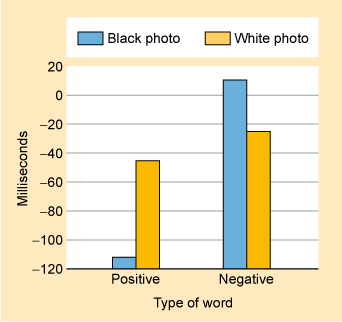1.4 The activation of racial attitudes
You will now be introduced to a method for studying prejudice that can be placed close to the ‘implicit/difficult to control’ pole of this continuum. The following activity is roughly based on a classic study originally conducted by Russell Fazio and his colleagues in 1995 (though it has been simplified and his methodology adapted). The study uses reaction time measures to access deep-seated association between race and implicit attitudes.
Activity 2 The automatic activation of racial attitudes
This task requires you to complete what social psychologists call a ‘priming task’ which is designed to explore the association between racial stimuli and positive and negative words.
(Please note that this exercise is simply designed to give you some practical experience of different methods psychologists use to measure prejudice. Your performance on these tasks is completely confidential and will not be stored or used for any other purpose.)
The following task has a number of phases. Follow the instructions in the box and work through each phase in turn.
Discussion
The tasks you have just completed were part of a classic series of studies which have been greatly simplified for the teaching purposes here. The study was conducted by Russell Fazio and colleagues and published in 1995 in the Journal of Personality and Social Psychology.
As you will have guessed, Fazio and colleagues were not really interested in the ability to classify words or remember faces. Their analysis focused on Phase 4 of the task in which participants were asked to classify – as quickly and accurately as possible – specific words as having positive or negative meanings (e.g. ‘attractive’ or ‘disgusting’), having just been exposed to a photograph of either a white or a black male face.
Take a look at the following figure which represents some of Fazio et al.’s main findings. As you can see, white participants in the study tended to classify positive words more quickly (in milliseconds) if they were preceded by exposure to a white face ‘prime’ than they did when such words were preceded by a black face prime. Similarly, white participants tended to classify negative words more quickly when preceded by a black, rather than a white, face prime. Note that the term ‘prime’ here simply refers to anything that gets people to think about the racial categories of ‘white’ or ‘black’.

Why might this pattern of results be of interest to prejudice researchers?
